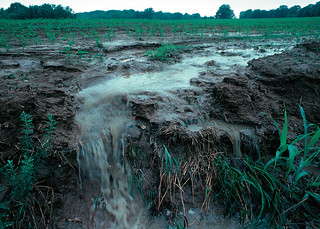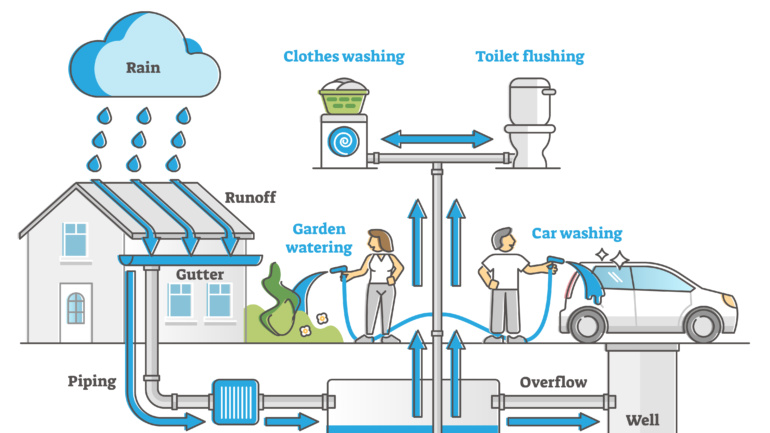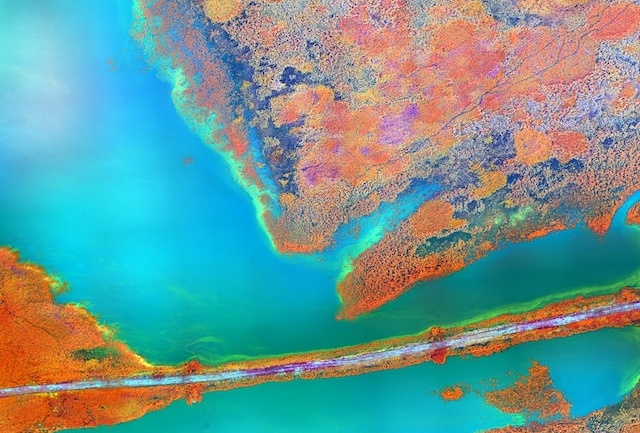By Ciara Kavanagh, Staff Writer & Researcher for Save The Water™ | November 5, 2020
“Water, water, everywhere! But not a drop to drink.”
The poet Samuel Taylor Coleridge was talking about the deep blue sea. But outdated water recycling could make this salty scenario a reality on our lush, green lands sooner than we think. We need a sustainable solution, and we need it fast.
Water scarcity comes in many forms. Physical scarcity (due to hot weather, droughts, or unregulated water use) has long strained our global drinking supply. But a more manufactured scarcity is one factor we overlook. This can be available water that is unfit for human consumption. It is often the result of outright pollution or ineffective water recycling. The UN’s Food and Agriculture Organization (FAO) says the “progressive deterioration of water quality” accelerates scarcity, leaving communities with less and less clean water to live off. According to Sustainable Development Goal 6 a sustainable solution is necessary to maintain healthy waterways and keep up with global water demand, for people and planet alike.
From Farm to Fork
The agricultural sector is a good place to start in plugging the leak. Modern farming— from cattle to cornmeal— often has large “water footprint.” FAO statistics state that agriculture accounts for a whopping 70% of water withdrawals worldwide. Nurturing crops and creatures from farm to fork involves thousands of gallons of water, whether in irrigation or feed. However, much of this water exits the system as runoff, animal effluent and leaked pollution. This kind of unsustainable agriculture exhausts water reserves locally with effects on ecosystem and economy alike.
The Pollution Process
Untreated or poorly processed wastewater can be harmful in several subtle ways. Aside from the direct effects of ingesting pathogens from agricultural waste (such as Legionella and Pseudomonas), heavy metals and toxic compounds like polycyclic aromatic hydrocarbons (PAHs) may enter soils. These toxins have even been found in vegetables growing close to polluted waterways, having carcinogenic effects on those relying on the food source. The transmission of pathogens via unsafe drinking water took the lives of 6,939 Americans in 2017 alone.
Today’s technology
The need to save the water couldn’t be more urgent. Yet current approaches fall short, with many contemporary recycling technologies relying on chemical input. They typically concentrate the pollutant, rather than degrading it. This has a high environmental impact and simply transfers pollutants to the next phase. Furthermore, costs mount as pathogens persist in the water source, making the process unattractive to potential buyers.
Advanced Oxidation Technologies
Enter Advanced Oxidation Technology processes, or AOTs, the sustainable solution. They may be the simple bridge over troubled waters we need. Touted in literature as “one of the sustainable solutions” to the water crisis, this innovative photocatalytic water purifier goes above and beyond traditional recycling. By ridding the water entirely of pollutants such as pesticides, microorganisms, and heavy metals that harm our health, wastewater can be made fit for human consumption cheaply and quickly.
How does it work?
Shining a particular frequency of light onto special reflective surfaces rapidly produces OH ions, or “free radicals.” These highly volatile particles furiously bond to pests and pollutants, “degrading” or breaking them down to nothing in an instant. Separated into their constituent parts, they precipitate into a removable solid or disappear as the hydrogen and oxygen atoms that make up water.
Benefits Abound
Used correctly, AOT can kill 99.999% of pathogens Legionella and Pseudomonas without the harsh chemical input that the traditional service requires. Low biodegradability and high chemical stability mean such conventional techniques, such as microfiltration, ultrafiltration, reverse osmosis, activated carbon adsorption, and sand filters, cannot break down organic compounds to begin with. Furthermore, its versatility has seen success in swimming pools and A/C systems. It can be used in conjunction with other wastewater treatment methods or as a pre-treatment. It may also prevent the entry of pathogens into the system in the first place. All in all, AOT offers an “efficient, cheap and eco-friendly” solution to an increasingly severe issue.
At the end of the day
Though water grows scarcer, it is no less essential to the existence of every creature on earth. However, with no chemical input and no polluting end-product, the sustainable solution of AOTs can prevent toxic entries into our water systems and ensure renewed supplies of water where we need it most.
Image details: AGRICULTURAL RUNOFF POLLUTES ALREADY STRAINED WATER SUPPLIES. “Agricultural runoff: Runoff of nutrients from farm fields is one of the primary sources of nutrients in many coastal waterbodies.” Photo Credit Lynn Betts, No endorsement





